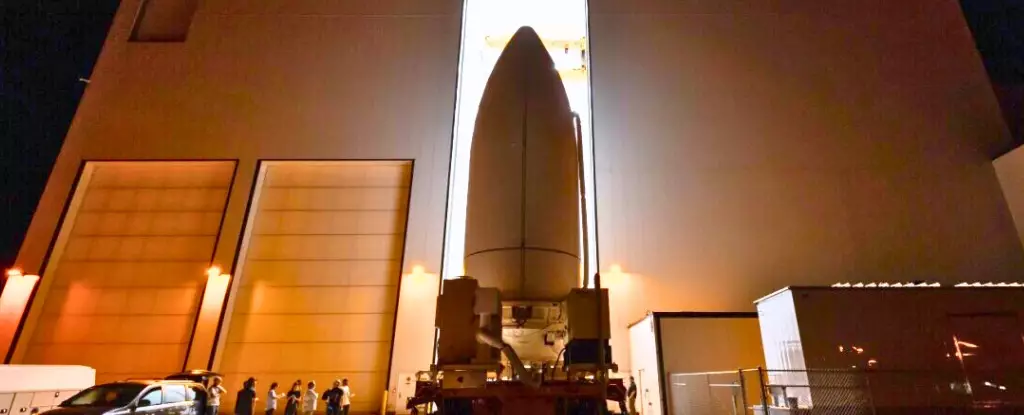Amazon is on the verge of a pivotal moment in the evolving landscape of satellite internet, with the impending launch of its first full batch of Project Kuiper satellites. Set for liftoff on April 9, this mission—dubbed Kuiper Atlas 1—will utilize an Atlas V rocket to deploy 27 highly advanced satellites from Cape Canaveral, Florida. This ambitious step underscores Amazon’s determination to carve a niche in a market currently dominated by SpaceX’s Starlink.
A Competitive Edge in a Crowded Market
The escalating competition in the satellite internet arena cannot be overstated, particularly as Amazon seeks to counter the impressive foothold established by Elon Musk’s SpaceX. Starlink, having propelled over 6,750 satellites into orbit since its inception in 2019, currently leads the charge in global connectivity efforts. While Amazon’s mission aims to provide internet access to the most marginalized regions—including disaster-hit zones—the question remains: can Project Kuiper effectively rival Starlink’s extensive coverage and operational experience?
Project Kuiper is not just about numbers; it signifies a strategic play by Amazon to leverage its resources and technological prowess. With over 3,200 satellites planned for deployment in low Earth orbit, the potential to deliver high-speed, low-latency broadband service worldwide is promising. This capability could bridge the digital divide, especially in remote and underserved areas that have remained largely neglected by traditional telecommunications infrastructure.
A Technological Upgrade
What sets Project Kuiper apart from mere competition is the technological leaps embedded within these satellites. Unlike earlier prototypes tested in October 2023, the upcoming fleet promises significant advancements in their design and functionality. Amazon positions these satellites as a new echelon of connectivity solutions, enhanced by years of research and refinement gleaned from the tech industry.
Furthermore, the collaboration with United Launch Alliance (ULA) emphasizes Amazon’s commitment to the mission. ULA, a powerhouse partnership between Boeing and Lockheed Martin, brings decades of launch experience to the table. This alignment highlights not just a business venture, but a concerted effort to harness expertise in aerospace engineering to achieve Amazon’s lofty connectivity goals.
Global Implications and Future Prospects
As Project Kuiper embarks on its journey, its implications stretch beyond merely offering internet access. This endeavor could reshape socio-economic landscapes by providing educational resources, healthcare services, and family connectivity in previously inaccessible areas. By intertwining technology with global impact, Amazon aims to fulfill what many see as a social obligation—ensuring that digital information is accessible to all, regardless of geography.
However, the looming question of sustainability persists. With other countries ramping up their satellite initiatives—China’s aggressive plan to launch 13,000 satellites, Canada’s Telesat’s 300, and the EU’s Iris project—Amazon’s success will depend not only on technological prowess but also on scalability, regulatory challenges, and the ability to adapt to a rapidly changing market.
In a world increasingly reliant on connectivity, Amazon’s Project Kuiper represents a bold step toward a more inclusive digital future, one where the potential for global communication rises alongside ambitions to deliver high-speed internet to those who need it the most.


Leave a Reply